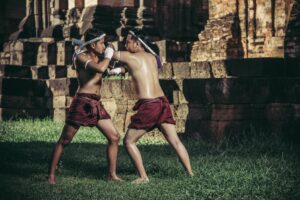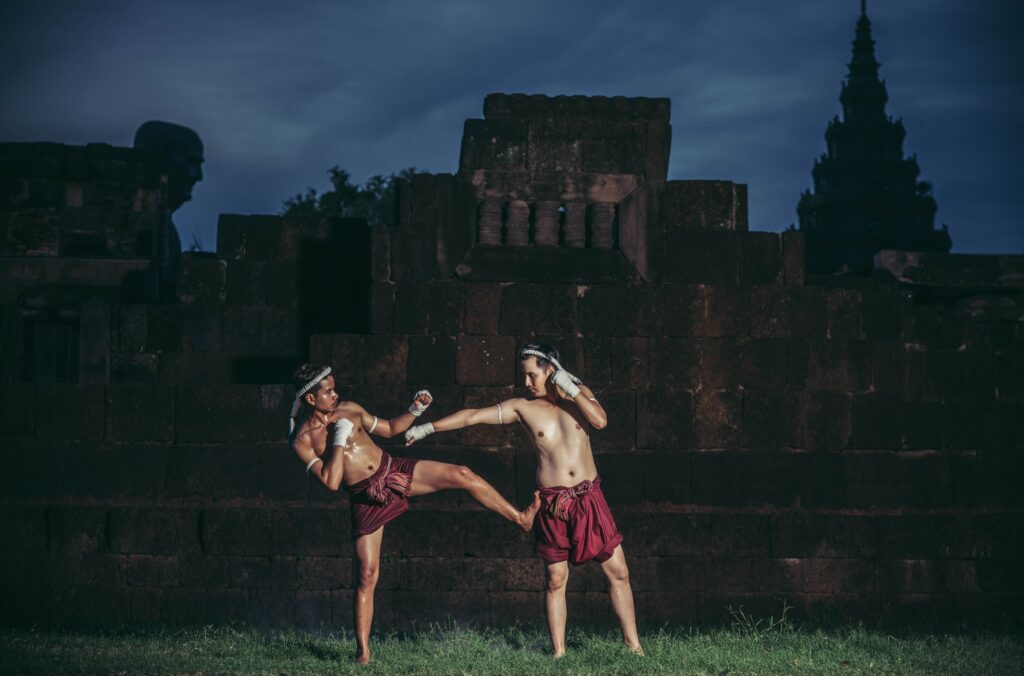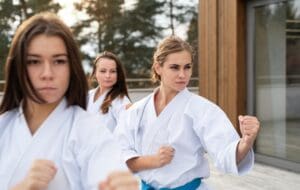Table of Contents
ToggleMuay Thai for Beginners: A Quick Guide
Have you ever wondered what Muay Thai is and why it’s becoming one of the most popular martial arts around the world? Whether you’re drawn to its power-packed fighting style, its cultural heritage, or the incredible physical conditioning it offers, Muay Thai has something for everyone. For those living in Randolph, New Jersey, looking to dive into martial arts, this beginner’s guide to Muay Thai will walk you through everything you need to know—from its rich history to essential techniques, training tips, and how to get started with confidence.
What is Muay Thai? A Powerful Martial Art with Deep Roots
Muay Thai, often called “The Art of Eight Limbs,” is a traditional martial art from Thailand. It utilizes punches, kicks, elbows, and knee strikes, making it one of the most versatile and dynamic striking styles in the world. Unlike many other martial arts that rely heavily on fists or feet, Muay Thai engages eight points of contact, offering a full-body workout and an effective self-defense system.
A Brief History of Muay Thai
Understanding the history of Muay Thai provides a deeper appreciation for its cultural significance. Originally developed as a military combat technique in ancient Siam, Muay Thai evolved over centuries into both a national sport and a spiritual practice. Traditional Muay Thai was often performed in ceremonial settings and involved rituals, music, and strong ties to Thai identity and honor.
Today, Muay Thai is practiced worldwide and is an integral part of Mixed Martial Arts (MMA) training. Despite its modern adaptations, traditional Muay Thai values such as respect, discipline, and perseverance remain core to its practice.
Muay Thai Basics: What Every Beginner Should Know
If you’re new to Muay Thai, the first step is understanding its basic components. Here’s a quick Muay Thai overview to get you started:
- Stance: A proper Muay Thai stance is essential for both offense and defense. It involves keeping your feet shoulder-width apart, elbows tucked in, and hands up to guard your head.
- Guard Position: Protect your face with your gloves while maintaining mobility to react quickly to strikes.
- Footwork: Simple yet efficient—Muay Thai footwork focuses on balance, positioning, and closing or creating distance.
Muay Thai Techniques and Common Moves
Muay Thai techniques emphasize striking precision and control. Some of the most common Muay Thai moves include:
- Roundhouse Kick: Delivered with the shin, this powerful kick targets the thighs, ribs, or head.
- Teep (Push Kick): A defensive tool to create distance and control your opponent.
- Elbow Strike: Sharp and dangerous at close range.
- Knee Strike: Highly effective for both offense and clinch control.
- Clinch: A unique aspect of Muay Thai used to dominate opponents at close range, controlling their posture and delivering devastating knees and elbows.
Muay Thai vs Kickboxing: What’s the Difference?
Many beginners wonder about the difference between Muay Thai and kickboxing. While both are striking arts, Muay Thai includes elbow and knee strikes as well as clinching techniques. Kickboxing, on the other hand, generally limits its strikes to punches and kicks and lacks the traditional cultural elements that make Muay Thai unique.
Training Essentials: Equipment and Workouts
To begin your journey, you’ll need the right Muay Thai equipment:
- Gloves: Protect your hands and wrists.
- Hand Wraps: Offer additional support and protection.
- Shin Guards: Crucial for beginners to avoid injury during practice.
- Mouthguard and Groin Protection: Essential safety gear.
- Muay Thai Shorts: Designed for mobility and comfort.
Beginner Muay Thai workouts typically include:
- Shadowboxing
- Heavy bag work
- Pad drills with a trainer
- Clinch practice
- Conditioning (jump rope, bodyweight exercises, and running)
These workouts build not only technique but also stamina, strength, and mental toughness.
Muay Thai Training for Beginners: How to Start
Here’s how to start Muay Thai training, even if you’ve never set foot in a gym before:
- Find a Reputable Gym: Look for a facility that offers structured Muay Thai for beginners, like Morris County Wrestling and Martial Arts in Randolph, NJ.
- Attend a Trial Class: Many gyms offer first-time classes free or at a discounted rate.
- Start Slow and Stay Consistent: Learning Muay Thai is a journey. Don’t be discouraged by early challenges.
- Ask Questions and Seek Feedback: Coaches appreciate students who are eager to learn and improve.
Benefits of Muay Thai Training
The benefits of Muay Thai go far beyond physical fitness. Practitioners experience improvements in:
- Cardiovascular endurance
- Strength and flexibility
- Self-confidence
- Stress relief
- Discipline and focus
It’s also an excellent form of Muay Thai for self-defense, equipping you with practical skills to protect yourself effectively.
The Rich Culture of Traditional Muay Thai
Muay Thai culture includes a spiritual and ceremonial side, often expressed through the Wai Kru Ram Muay, a ritual dance performed before a fight to show respect to teachers and the art itself. Understanding this tradition helps you appreciate the depth behind the techniques and physical conditioning.
Final Thoughts: Learn Muay Thai Today
This introduction to Muay Thai reveals just how layered and rewarding the martial art truly is. From its historical roots and cultural richness to its powerful techniques and mental benefits, Muay Thai offers something valuable for every beginner.
If you’re ready to learn Muay Thai and begin your training journey, contact Morris County Wrestling and Martial Arts in Randolph, New Jersey. Whether you’re looking to get in shape, build confidence, or train for competition, their expert instructors will guide you every step of the way. Call us at (973) 713-3556 or Email: mcwandma@gmail.com




